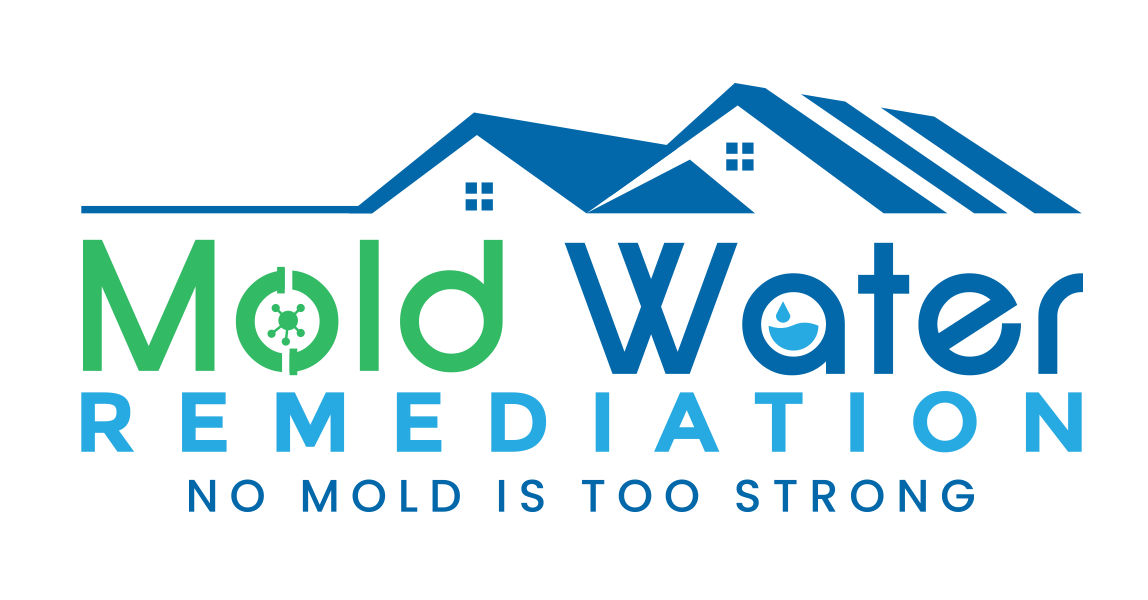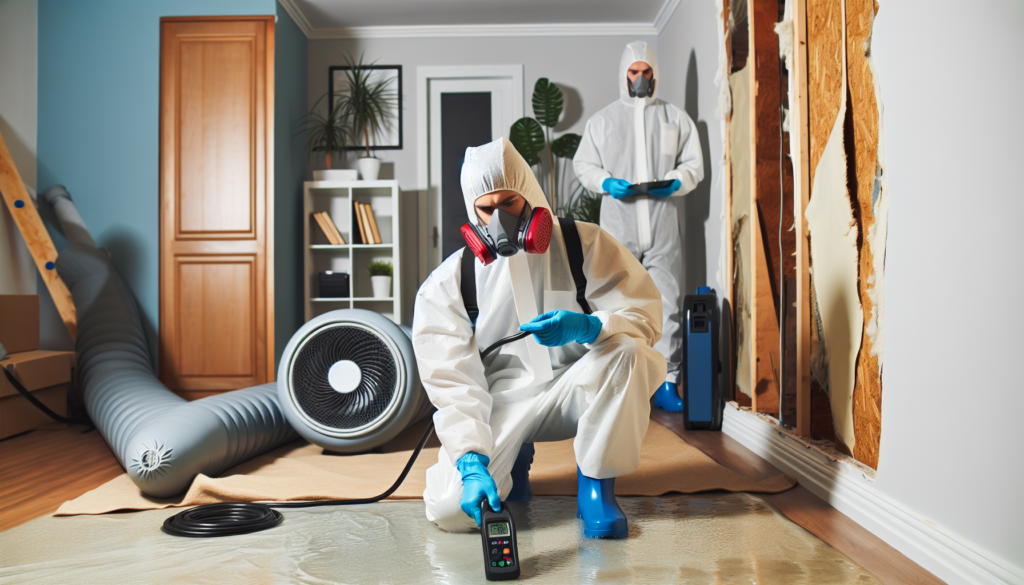Once a pristine sanctuary of calm, her kitchen had become a petri dish of mold. It was a silent invasion, suffocating her home’s purity.
Facing this unwelcome infestation, homeowners often find themselves in dire need of professional mold removal services – the meticulous warriors against microscopic menaces.
Understanding Mold Infestation
Mold infestation is far from merely an aesthetic inconvenience; it represents a serious health and structural threat within the home. Constituting a diverse group of fungi that flourish in moist environments, these organisms propagate by releasing spores that can spread through the air, attaching to surfaces awaiting conducive conditions for growth. Prompt and thorough eradication by professional services is paramount not just to restore visual appeal, but, more critically, to ensure the dwelling’s air quality and structural integrity remain uncompromised.
Health Risks of Mold Exposure
Exposure to mold, particularly over an extended period, can lead to a variety of adverse health consequences, ranging from mild allergic reactions to more severe conditions. Symptoms commonly associated with mold exposure include respiratory issues, allergic rhinitis, and skin irritations.
Those with compromised immune systems or preexisting respiratory conditions are at a heightened risk for developing serious infections when exposed to mold. In children, prolonged mold exposure has been linked to the development of asthma.
Some molds produce mycotoxins that can be harmful when inhaled.
Chronic exposure to mold can also lead to a condition known as hypersensitivity pneumonitis. This condition can trigger significant lung inflammation and scarring, impairing respiratory function over time. Therefore, swift and effective mold remediation is crucial to safeguard the health of occupants within affected environments.
Signs of a Mold Problem in Your Home
Visible growth on walls or ceilings is a telltale sign of a mold issue that requires attention. Patches may vary in color and size, indicating different species or growth stages of mold.
Musty odors often signal mold presence before it becomes visually apparent. A persistent earthy or damp smell suggests that mold may be proliferating in hidden spaces within your home.
Water damage, such as discoloration, warping, or peeling wallpaper or paint, often coexists with mold growth, since mold thrives in moist environments. These may be indicators of mold colonies establishing themselves out of plain sight.
Health symptoms such as unexplained allergies, respiratory issues, or headaches might reveal mold invasion, especially if these symptoms improve once away from the affected environment. A correlation between time spent at home and symptom severity is noteworthy.
Condensation on windows or pipes can also be a precursor to mold problems, denoting high humidity levels that create conducive conditions for mold proliferation indoors.
Mold Removal vs. Remediation
Mold removal is often perceived as an absolute extraction of all mold from a given environment, a concept that is, in reality, impracticable due to mold’s ubiquitous nature.
Mold remediation, conversely, is a multifaceted process involving containment, air filtration, removal of mold-infested materials, cleaning, and disinfection, ultimately restoring the environment to a normal fungal ecology.
The terms “mold removal” and “mold remediation” may seem interchangeable, yet their implications significantly differ in the field of fungal abatement.
The Removal Process Explained
Mold remediation is a detailed protocol.
Firstly, the site undergoes a thorough assessment. This phase involves identifying the source of moisture that has facilitated mold growth. Once located, steps are taken to rectify this issue, which may involve repair or modification of existing structures. Significantly, this is a prerequisite for the successful elimination of mold, as addressing the moisture source is essential to prevent future infestations.
Containment procedures are strictly enforced.
Following the assessment, contaminated areas are isolated. This is achieved using plastic sheeting supported by negative air pressure to prevent the spread of mold spores during the cleanup. Technicians wear protective gear to safeguard their health when dealing with hazardous material.
Specialized cleaning agents are utilized.
The cleanup phase involves meticulous scrubbing and sanitizing of affected surfaces with EPA-registered antimicrobials, coupled with HEPA vacuuming to capture microscopic spores. This ensures a high standard of environmental cleanliness, reflecting industry best practices as of early 2023. Post-cleanup, all materials securely bagged must be disposed of in accordance with local regulations. This prevents the re-introduction of mold spores back into the remediated area.
Remediation for Long-Term Protection
Effective mold remediation is a comprehensive process that aims not only at removing current growth but also at ensuring long-term protection from future infestations.
- Identify and Rectify the Moisture Source: The initial step in sustainable mold control is to find and eliminate the source of moisture that enabled mold growth.
- Employ Advanced Mold Remediation Techniques: Professional services use state-of-the-art methods and fungicides specifically developed for long-lasting mold prevention.
- Implement Preventative Measures: Post-removal, it’s crucial to incorporate strategies such as moisture control, proper ventilation, and regular inspections to maintain a mold-resistant environment.
- Regular Maintenance and Monitoring: Establish an ongoing inspection and maintenance schedule to detect potential mold threats early.
- Educate on Best Practices: Homeowners should be informed about moisture management and mold awareness to proactively prevent the conditions conducive to mold growth.
The integrity of the structure and the quality of indoor air rely on enduring safeguarding against mold and moisture.
Through a strategic, multifaceted approach, mold remediation services can provide you with both immediate relief and long-term defense, securing your property against the persistent threat of mold.
Choosing Professional Mold Services
Selecting a qualified mold remediation service is vital to ensure a thorough and safe removal process. Only certified professionals possess the specialized skills and tools required for effective mold abatement. It’s imperative to verify credentials and seek out services with a proven track record of resolving mold issues efficiently, promoting long-term indoor air quality and structural integrity.
When assessing potential services, look for indicators of excellence such as IICRC (Institute of Inspection, Cleaning, and Restoration Certification) or equivalent certification. True experts in the field come equipped with deep understanding and high-caliber equipment, capable of diagnosing the full extent of mold proliferation and formulating effective strategies for eradication and prevention. Moreover, experienced providers will be adept at handling complex scenarios, ensuring the health and safety of the inhabitants while meticulously restoring the affected environment.
Qualifications of Mold Removal Specialists
Mold removal specialists are rigorously trained in identifying, containing, and eradicating mold, ensuring a return to a safe living environment. These professionals uphold stringent industry standards and protocols, underscoring a commitment to quality assurance and client safety.
Their credentials often include IICRC certification, a gold standard within the remediation sector. This accreditation attests to a proficiency in the latest mold removal techniques and technologies.
Furthermore, qualified specialists undergo continuous education, remaining current on evolving industry practices (including the Environmental Protection Agency’s stringent guidelines) and technological advancements.
Each specialist is expected to adhere to strict health and safety regulations to protect themselves and the residents, guaranteeing the use of appropriate personal protective equipment and containment measures.
They must also be well-versed in the legal requirements governing mold removal, ensuring compliance with local, state, and federal regulations that dictate safe handling and disposal procedures during the remediation process.
Lastly, the proof of their acumen is often reflected in comprehensive insurance coverage. This not only provides peace of mind for homeowners but also offers a measure of accountability and financial protection during the remediation process.
Mold Removal Technologies and Techniques
Professional mold removal employs state-of-the-art methods to safely and effectively eradicate mold infestations.
- HEPA Filtration – Ensures the containment of airborne mold spores during remediation.
- Antimicrobial Agents – Inhibit the growth and ensure the destruction of mold colonies.
- Infrared Technology – Detects hidden moisture that could harbor mold growth.
- Negative Air Pressure Systems – Prevents cross-contamination to other areas of the home.
- Dehumidification Equipment – Maintains a dry environment to suppress mold proliferation.
- Advanced Protective Gear – Protects technicians and prevents the spread of mold.
These techniques are integrated into a comprehensive mold management strategy.
A critical aspect is identifying the root cause of mold, which typically involves moisture control.
Expert remediation goes beyond removal, focusing on long-term prevention and maintaining a healthy living environment.
Post-Removal Care and Prevention
Following mold remediative measures, sustaining a mold-resistant habitat is of exceptional importance. Stringent moisture control, routine inspections, and swift rectification of leaks are fundamental practices that disrupt the reoccurrence of mold. Ensuring adequate ventilation throughout your residence fortifies this strategy by regulating humidity levels and deterring mold’s return.
Embedding proactive maintenance habits into your routine significantly fortifies your home against future mold challenges. Employing dehumidifiers in moisture-prone zones, selecting mold-resistant materials during renovations, and upholding cleanliness can substantially diminish the likelihood of mold resurgence, safeguarding your living environment.
Maintaining a Mold-Free Environment
A vigilant approach to humidity regulation is pivotal for establishing a mold-resistant domain within your home. Consistent monitoring of indoor humidity levels—ideally maintaining them below 50%—can significantly undermine mold’s ability to flourish.
Implementing effective ventilation systems in key areas, particularly bathrooms, kitchens, and laundry rooms, is crucial for expelling excess moisture. This step is a cornerstone in a comprehensive mold prevention strategy.
It is imperative to address any water intrusion promptly—whether it be a leaking pipe, roof, or window—to prevent mold’s opportunistic establishment. Such diligence in repair and immediate action can be the difference between a minor maintenance issue and a full-scale mold infiltration.
Incorporating mold inhibitors into paint and employing anti-microbial agents for cleaning purposes further enhance your mold defense arsenal. While these measures act as effective deterrents, they must be part of a broader, integrated approach that emphasizes moisture control, cleanliness, and regular inspection to truly maintain a mold-free environment.
When to Schedule Regular Inspections
Vigilance is the keystone of mold prevention.
Annual inspections are the benchmark for mold vigilance. The timeline for these assessments should be adjusted based on individual dwelling characteristics, such as history of moisture problems, presence of high humidity environments, or weak points where water infiltration could occur. Furthermore, properties with a past incidence of mold infestation or those situated in regions with high humidity should opt for more frequent examinations to preemptively detect mold growth.
Inspections are best scheduled during seasonal transitions.
Repeat inspections post-remediation ensure sustained efficacy. If your property has undergone mold remediation, it is prudent to adhere to a rigorous inspection schedule – at least for the initial year following treatment – to ensure that the remediation measures have been successful and sustainable.
Structures with compromised ventilation necessitate extra scrutiny. Properties with inherent vulnerabilities, such as inadequate ventilation systems which can trap moisture indoors, warrant a tailored mold inspection schedule. According to the latest industry insights as of early 2023, experts recommend biannual reviews for such properties. This frequency affords a proactive approach to address and mitigate potential humidity-related complications before they escalate into problematic mold infestations.

